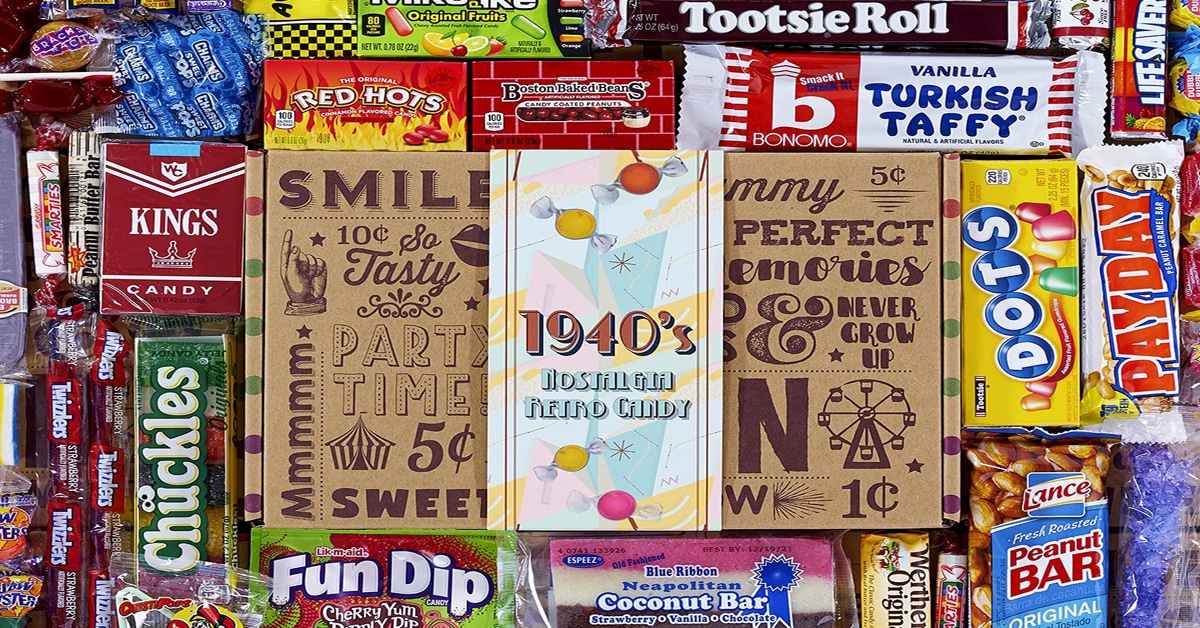Vintage Candy – Ultimate Guide to 19 Classic Retro Candy
Have you ever wondered what happened to all that vintage candy that were popular decades ago? Luckily, they haven’t disappeared! Popular candy brands always try hard to take care of their customers’ needs, and as a result, the most successful vintage candy are still on the market even nowadays.
Trying new types of candies is nothing unusual today. We can just go to any store and get our favorite treat. However, there was a time when candy was not affordable and available for everybody. It was more of a luxury thing. And that’s probably one of the reasons why candy-lovers still adore popular vintage candy from the 1990s or any decade of the previous century.
Please leave a review or any memories of this snack in the comments at the bottom of this page. Thank you!
Back in the day, making candy was not an easy thing to do. Confectioneries faced many challenges. However, they still continued their experiments and created some very popular and memorable treats. Follow us on a journey of vintage candy from the 20th century.
Names of Vintage Candy
- Baby Ruth Bar
- Peanut Chews
- 5th Avenue Bar
- Heath Bar
- Almond Joy
- Bazooka Bubble Gum
- Candy Cigarettes
- Atomic Fireballs
- Nik L Nip
- Cow Tales
- Charleston Chew
- Nut Goodie
- Jolly Ranchers
- Junior Mints
- Hershey’s Kiss
- Butterfingers
- Jaw Busters
- Candy Buttons
- Runts Candy
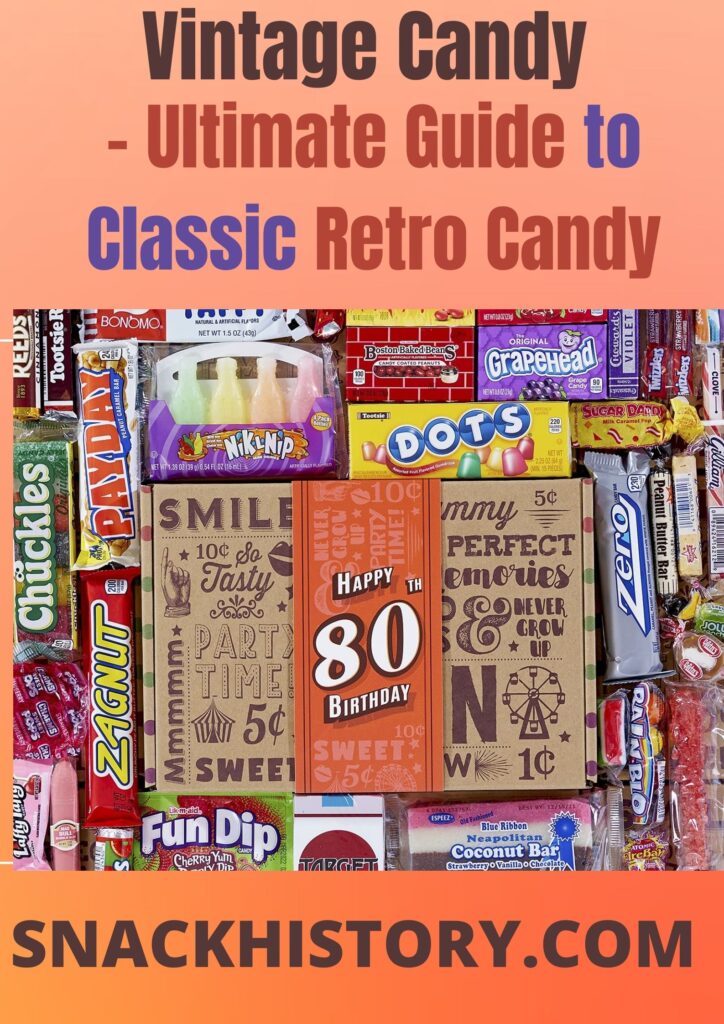
Most Popular Vintage Candy from the 1900s
If you wonder what some of the most successful candy brands that haven’t left the market yet are, take a look at the list below. In this section, we’ll look at some of the most delicious and sought-after vintage candy that can still be found in old-fashioned vintage stores. So, here’s the list of the top nine vintage candy from the 1900s.
1. Baby Ruth Bar
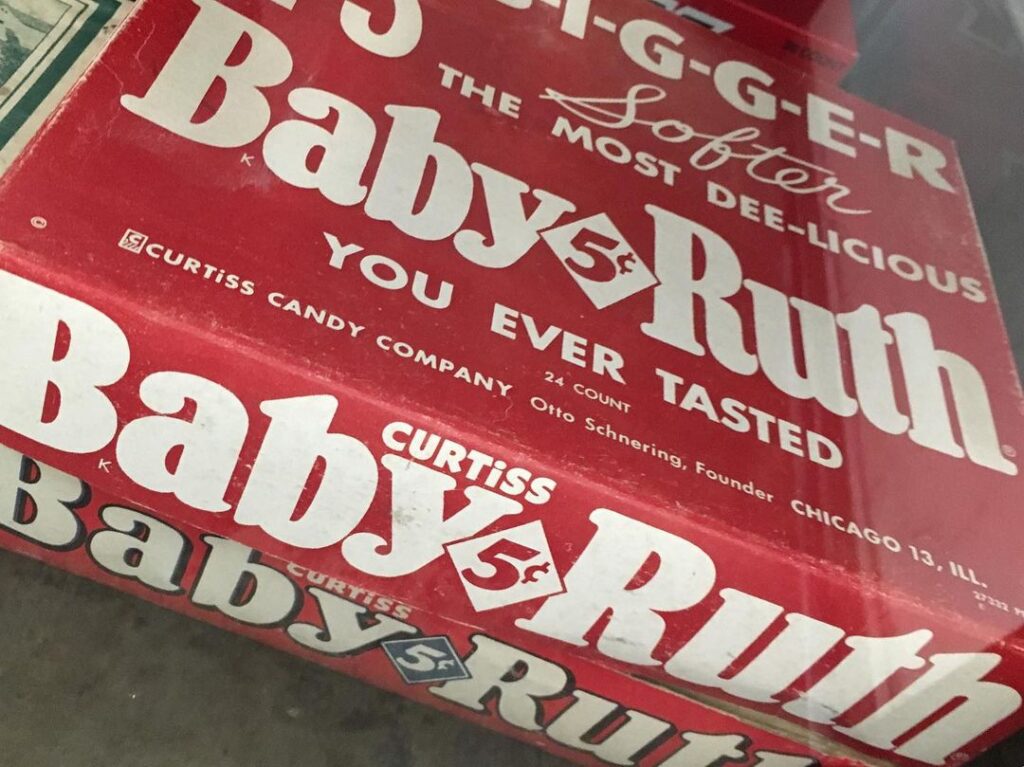
Baby Ruth Bar is one of the oldest candies that has remained popular and loved by people since its first appearance. This vintage candy is believed to be a very famous and well-remembered candy from the 1920s.
The Candy Bar was created by Otto Schnering. He was the founder of the Curtiss Candy Company. For five years, he has been trying to make it popular among people, and he has succeeded. Eventually, the Curtiss Candy Company was taken over by Nabisco. In 1990, it was transferred to Nestle. In 2018, Ferrero acquired Nestle’s brands, including our Baby Ruth chocolate bar. A candy bar producer is currently the Ferrara Candy Company.
The chocolate bar consists of caramel, peanuts, and nougat and has the flavor of milk chocolate. The filling is covered in compound chocolate. At first, the candy was named Candy Kake. However, in 1920, the Curtiss candy company upgraded it and renamed it “Baby Ruth.” The cost of candy was just five cents. Who would not love to eat a delicious treat as an energy bar for just 5 cents?
Some think that the candy bar was named after the famous baseball player. Nobody knows for sure, but the creator was claiming that the candy bar was named after President Grover Cleveland’s daughter.
The marketing campaign around Baby Ruth Bar was exceptionally surprising. This retro candy became much more famous, when the creator, Otto Schnering, did something unique. He chartered the plane and dropped thousands of candy bars from there. Each of them had a little parachute. He did it in a couple of cities in over forty states. It happened in 1923 and remains a very memorable promotion of candy.
2. Peanut Chews
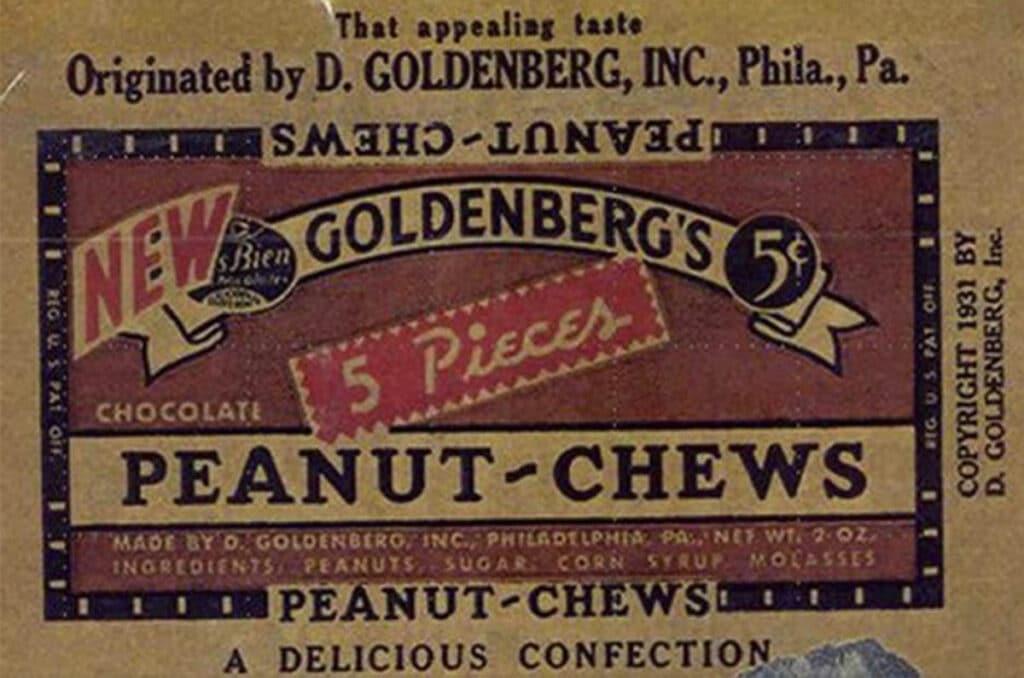
People love the peanut flavor, and it has been so for decades. People’s love for peanuts was well recognized and used by the confectioner Harry Goldenberg, who was the creator of famous Peanut Chews.
Peanut chews are truly a vintage candy from the 1920s. It is one of the few that managed to stay on the market for a full 100 years.
At first, it was introduced in 1917. However, it was not packaged. Back in time, when World War I was ongoing, peanut chews were used in soldiers’ daily rations. The ingredients caused the candy to be the source of energy.
This candy consists of peanuts and molasses that are covered in dark chocolate. Originally, the candy bar was vegan friendly, because it did not consist of milk or eggs. However, after some modifications, Milk Chocolate Peanut Chews and Retro Peanut Chews appeared.
Harry Goldenberg designed the packaging and began selling the candy in stores in 1921. At first, the candy was bite-size. In 1930, it was modified into a full-sized bar. Currently, this vintage candy bar is manufactured by the company “Just Born”.
3. 5th Avenue Bar
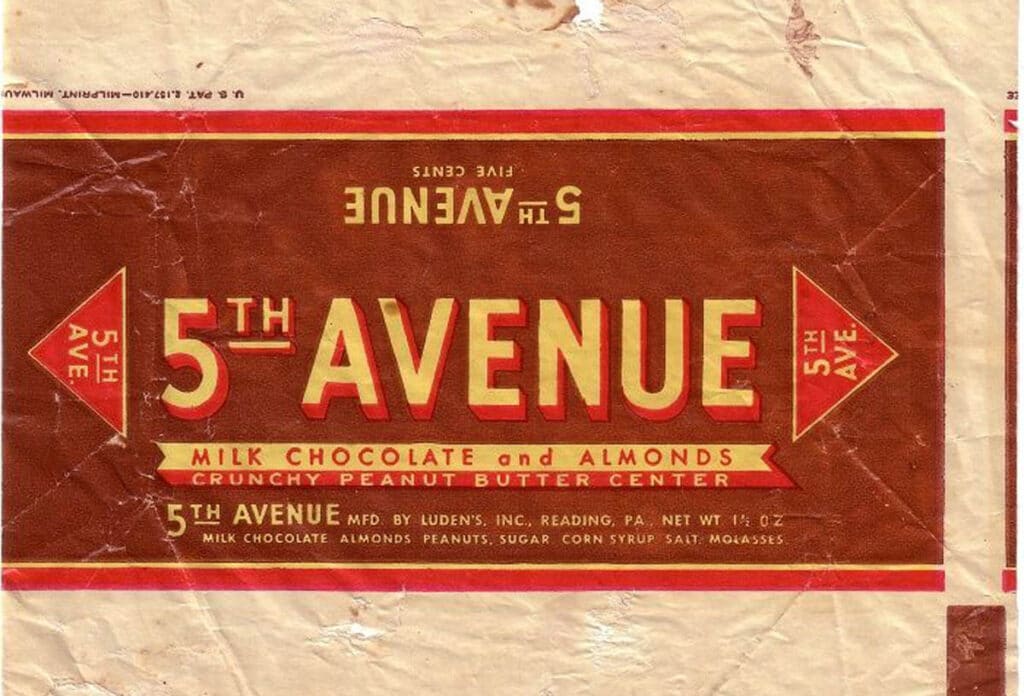
It is impossible to talk about vintage candy and not mention the 5th Avenue Candy Bar. Candy was introduced in 1936 by William H. Ludden at Luden’s company. Luden’s was a subsidiary of Food Industries, located in Philadelphia. Later on, Luden’s was sold to Hershey’s corporation.
5th Avenue Bar was especially popular in the 1930s. Candy was named after New York’s famous street. 5th avenue was especially popular and very fashionable back then, which is why the candy was named after it.
This vintage candy was made from crunchy peanuts dipped in milk chocolate. It had a skinny rectangular shape. The original candy had almonds on top. However, today it comes without almonds. The candy consists of the following ingredients: sugar, peanuts, cocoa butter, palm kernels, etc.
The candy bar is very similar to the Clark Bar and Butterfinger. It has a strong taste of chocolate and peanut butter. The original candy had some crunchiness to it, caused by the roasted peanuts and almonds. The packaging of the 5th Avenue Candy Bar is brown in color. It has a yellow letter outlined. The original candy packaging was made from cardboard boxes and had red coloring.
4. Heath Bar
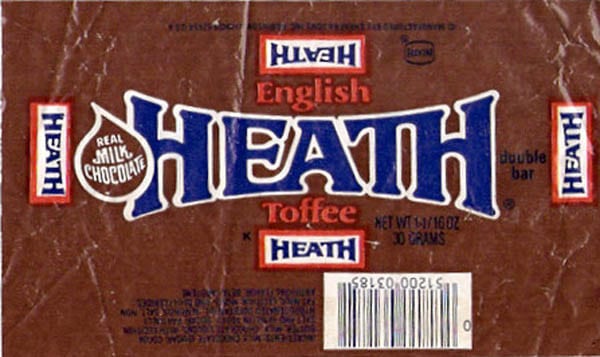
The Heath bar was invented in 1915 by the Heath Brothers, Bayard Heath, and Everett Heath Confectionery. They actually brought the recipe from the salesman. Soon, they started selling bars for daily truck deliveries. It quickly became so successful that it gave birth to the Heath candy company. Soon after, they got rich and had a split. Eventually, the company broke up and created Leaf, Co.
Heath Bar candy was first sold to the public in the 1920s. However, it was introduced internationally in 1932. Currently, the Heath Bar is manufactured by the Hershey Corporation. Candy was especially popular in the 1930s.
This vintage candy is made out of coffee, which is covered in thick milk chocolate. Candy was handmade until 1942. They used to make it using a copper kettle, stirring paddle, marble slab, and rolling knife. In that year, some parts of the candy-making process were mechanized.
After it got mechanized, the United States Army ordered a large amount of Heath Bar Chocolate. It was longer-lasting than other confectionery. So, it became part of the soldiers’ daily routine.
Heath English Toffee advertised itself as “America’s Finest.”They promoted products that were of the highest quality.
The Great Depression was a huge stress for US citizens. Heath Bar became one of the affordable treats of that time. After the depression ended, more and more people liked the bar. The company opened its first shop at Ben & Jerry’s ice cream base.
5. Almond Joy
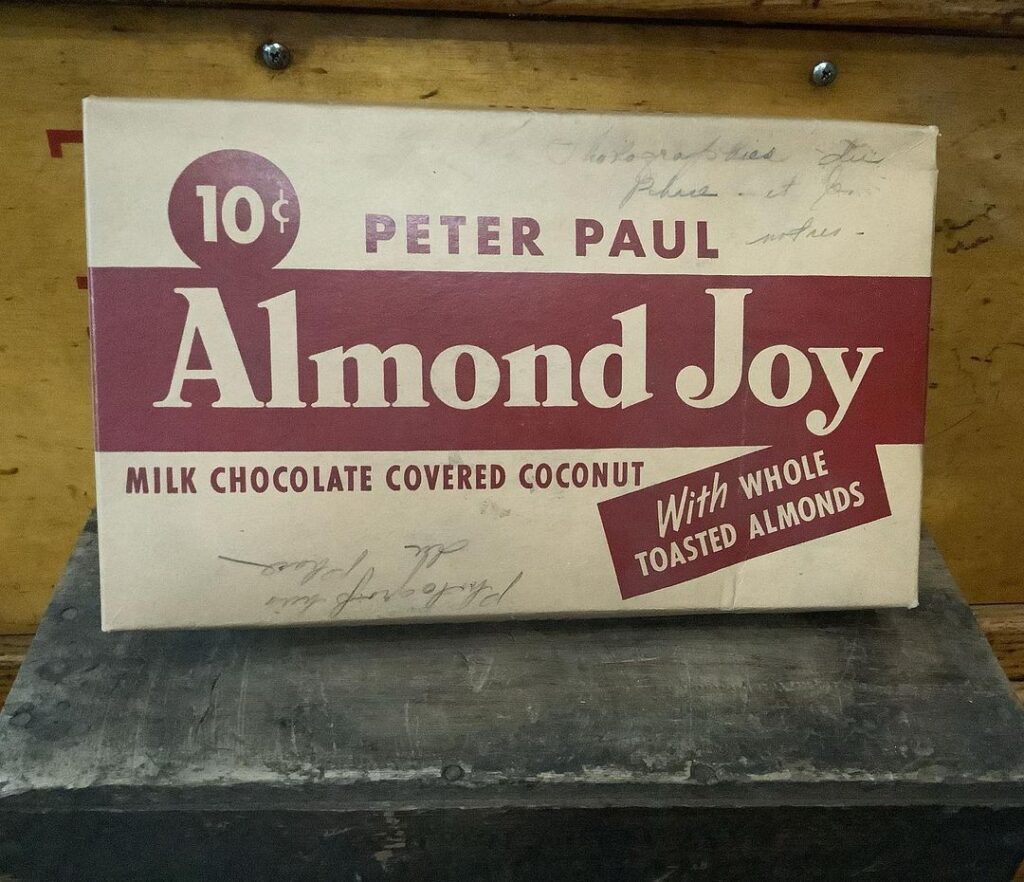
Almond Joy is another vintage candy that was first introduced in 1946. It was actually a replacement for the Dreams Bar from 1934. It was pretty unique among other candy bars and soon became one of the most popular candies from the 1940s. Traditionally, combinations of peanuts and chocolate were used in the candies. However, in Almond Joy, coconut was the main ingredient.
Milk chocolate consists of milk chocolate, almonds, and coconut. The center of the chocolate candy is soft, the coating is milk chocolate and almonds, which gives the candy its shape and consistency.
Peter Paul Candy Manufacturing Company was the manufacturer of Almond Joy. However, it was not sensational chocolate. Before that, something similar was also made in 1920. Candy was named “Mounds“ and has been on the market since World War II.
The Peter Paul Candy Manufacturing Company was created by immigrants from Armenia in 1919. Eventually, it was merged with Cadbury Schweppes in 1978. The new company was based in England. It was the Hershey Foods corporation that brought the candy to the United States. Hershey Food Corporation paid $300 million for the rights to manufacture Almond Joy.
Demand was so high that the United States military bought around 80% of the whole production in 1944.
6. Bazooka Bubble Gum
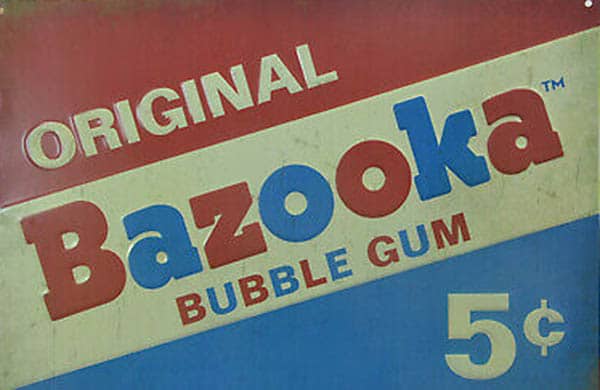
Bazooka Bubble Gum was introduced in 1947 in the United States. The chewing gum was the product of “Bazooka Candy Brands“, owned by The Topps Company, Incorporated.
The gum was made soon after World War II. And eventually, the name becomes associated with it. The chewing gum was named after a rocket-propelled weapon. The weapon was used by the United States Army.
Bazooka Bubble Gum was different from other chewing gum products. It had many different flavors. Apart from the original one, the flavors include Grape Rage, Strawberry Shake, and Watermelon Whirl.
Another unique feature offered by candy was that it had collectible wrappers. There were “Bazooka Joe Comic Strips” on them. It must’ve been very popular among the kids. Especially those who enjoyed amassing collections. It certainly became a memorable candy from the 1940s.
Candy is now sold in many countries. Mostly, the comic strips are translated into different languages, so all people have the opportunity to enjoy them. For example, in Canada, they are written in two languages: English and French.
7. Candy Cigarettes
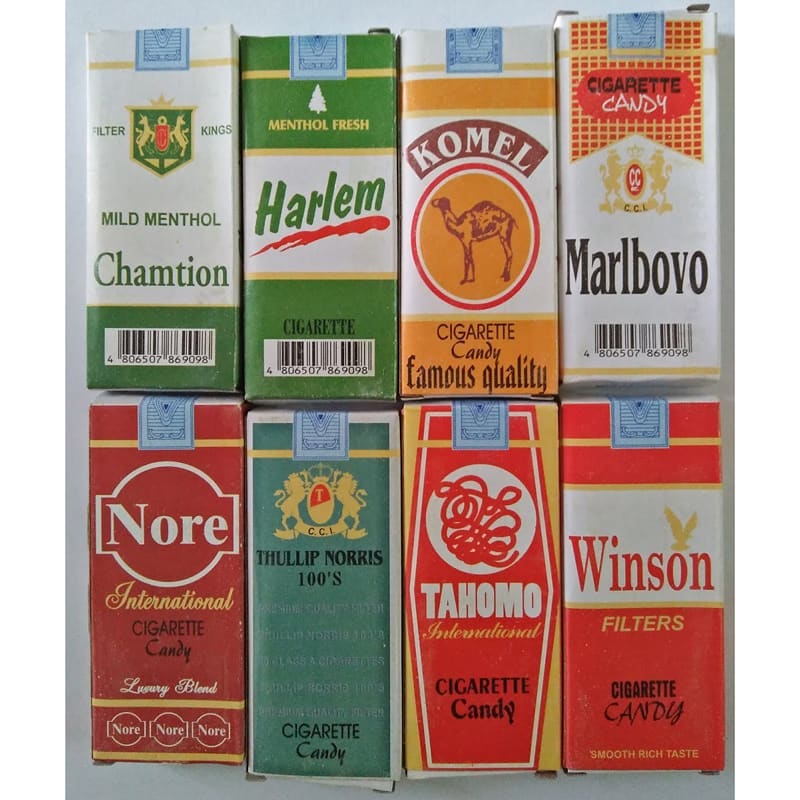
Since its appearance, Candy Cigarettes have been a sensational product. Even though it was created back in the 1930s, it was very popular in the following decades too. Candy Cigarettes is one of the fanciest vintage candყ on the market.
Candy was first made in the 19th century. Originally, it was made from either Chalky Sugar, Bubblegum, or chocolate. The candy was then wrapped in paper and packaged. It resembled cigarettes. Some Candy Cigarette products had powdered sugar inside, which created the imitation of smoke.
Candy cigarettes had a difficult time finding a market. At first, when smoking was not considered to be a health problem, it was just fine. However, later on, it received a lot of criticism and was even banned in many places. That’s why the manufacturers changed names and took “cigarettes” out of it.
Candy becაme especially popular among teenagers. They thought it was cool to smoke, so whoever had it was considered a cool person. Actually, tobacco companies and manufacturers of Candy Cigarettes cooperated. Tobacco companies gave the rights to the names to promote their products.
8. Atomic Fireballs
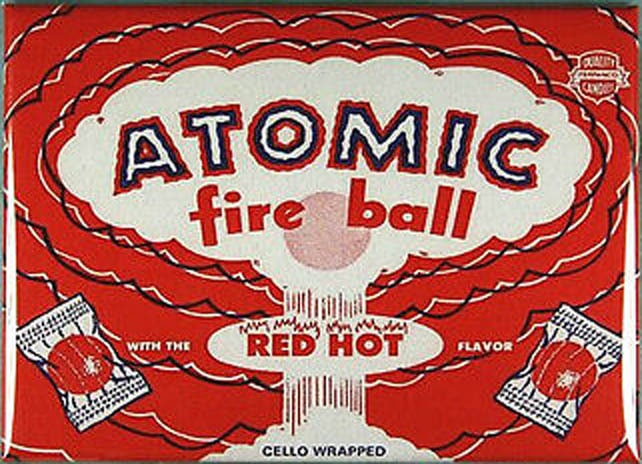
Atomic Fireballs were made in 1954 by Nello Ferrera, the former CEO of Ferrara Candy Company. The “Hot pan method” was used in the production. At the beginning of production, they could only make 200 cases each day. However, people liked it so much that it soon went up to 50, 000 cases a day.
Candies are round and have the form of a jawbreaker. It has a spicy cinnamon flavor. Atomic Fireballs have a bright red color coating. Inside they have a white filling. Apart from their unique taste, people liked them a lot because they were long-lasting.
An interesting fact about the candy is that it was adopted by flight controllers in Nasa’s Mission Control as a “Console Candy of Choice”. Candy comes in different packaging. There are some in a tub with a lid and also individually wrapped ones.
Candy is unique because of its spiciness. That’s why it became very popular, especially in the 1950s. This vintage candy really is associated with a lot of memories, childhood, and laughter.
9. Nik L Nip
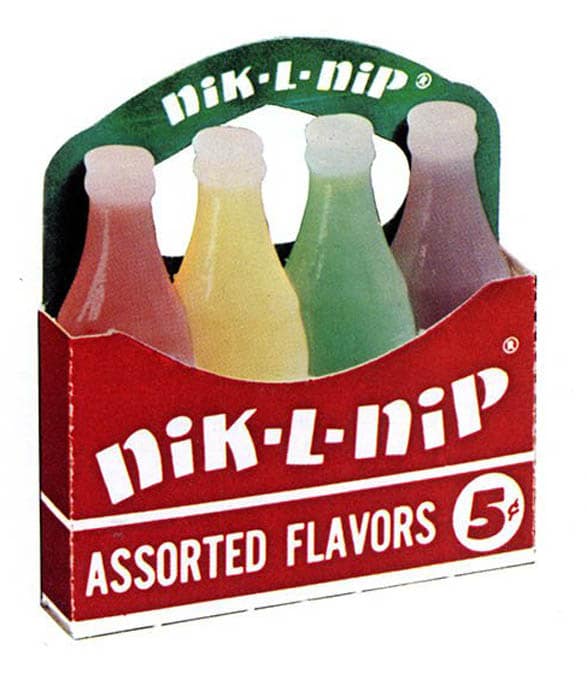
Nik L Nip is a candy made by Vinny Cavallo and was introduced in the 1950s. This vintage candy was marketed by Tootsie Roll Industries.
Candy is unique because of its shape and taste. In the package, there are small bottles with the juice in them. The top of the bottle has to be bitten off. After the bite, one can drink a fruit-flavored sweet juice. The “wax bottle” can be chewed like a piece of gum. However, it is only meant to be chewed and not swallowed.
The name of the brand comes from the original cost of candy. At first, the price of Nik L Nip was a nickel. The method of opening the small wax bottle by biting the top off—”nipping”—was used in the second part of the name. So, a unique name, Nik L Nip, was created.
Some concerns were raised about the healthiness and safety of chewing the wax bottles themselves. However, it turned out that the bottles were not toxic and food-grade. So, it is absolutely safe to chew it like bubble gum.
There were various flavored juices in the bottles, such as cherry, orange, lemon, and lime. The candy mainly consists of refined wax, water, corn syrup, and artificial flavors.
10. Cow Tales
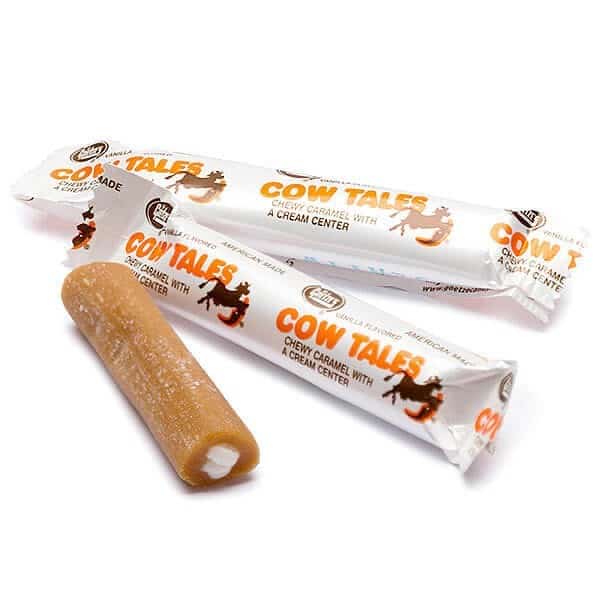
Since Goetze’s Candy first opened its doors in 1895, Cow Tales Candy’s history has been a celebration of American inventiveness. The Baltimore Chewing Gum Company was originally established in Maryland, but this family-run confectioner changed its focus in the 1940s and began making the most decadent caramels ever.
Caramel creams sometimes referred to as “Bulls Eyes,” were their first product to reach the market. A longer version, colloquially known as “cow tales,” was introduced in 1984 as a result of the quick success of these delectable, chewy delicacies prepared from a secret family recipe.
Even today, these silky, melt-in-your-mouth vintage candy bars are still created according to the original recipe with materials obtained from American vendors wherever available. Cow Tales are individually wrapped elongated caramels with a decadent cream filling that are simple to consume and will transport you to a time when sweets were produced the correct way, using natural ingredients and time-honored traditions.
Despite having a slightly equine-sounding name, this chewy vintage caramel candy does not have anything to do with an actual cow’s tail. This sweet treat’s name comes from its components, which include actual milk and cream, giving it that delectable fresh flavor. These candies are absolutely delicious in every bite, and they come in standard and tiny sizes as well as the delectable flavors of original, chocolate, and strawberry.
11. Charleston Chew
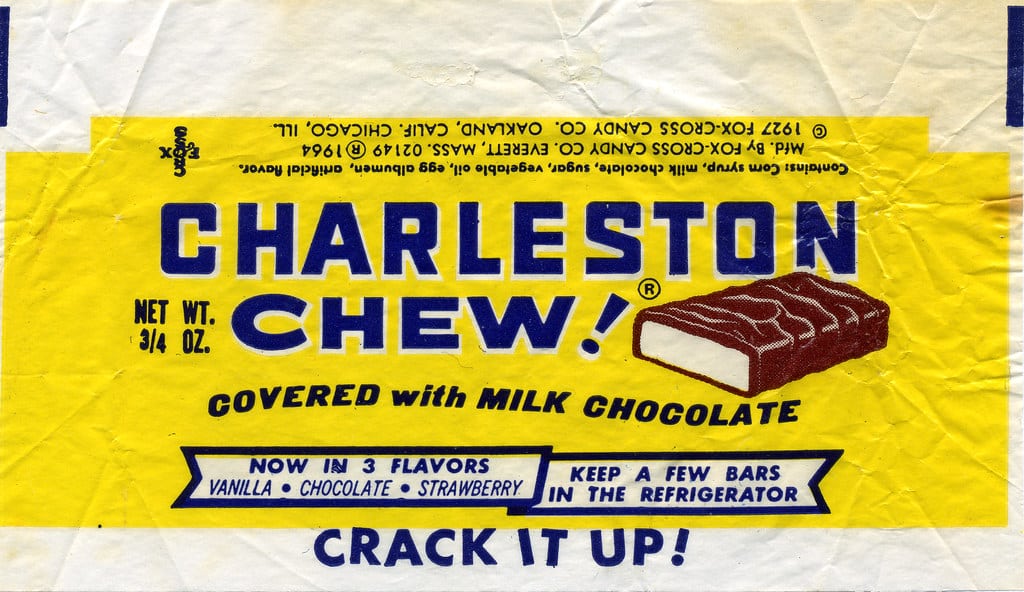
Former actor Donley Cross created the Charleston Chew when he and his friend Charlie Fox established the Fox-Cross Candy Company in 1920. They debuted with the Nu Chu, but it wasn’t until 1922, when they introduced the Charleston Chew, that they became well-known. The original Charleston Chew vintage candy bar was constructed of vanilla-flavored nougat and wrapped in milk chocolate. It was named after the then-current dancing fad.
According to corporate documents, Cambridge was producing candy in the middle of the 20th century. When Nathan Sloane acquired Fox-Cross in 1957, ownership of the company shifted. This was the time when everything really started to take off.
Sloane established the plant where The Batch Yard is situated and relocated the manufacture of the Charleston Chew there. He automated the production process and focused on advertising-based brand development. Under Sloane’s management, Charleston Chews were initially kept cold by consumers, giving rise to the term “Charleston Crack.”
Sloane also introduced additional tastes, including chocolate and strawberry. These days, many people eat candy using the technique of breaking up those vintage candy bars into bite-sized pieces by freezing them and slamming them against a hard surface.
By the time Sloane sold the business in 1980, output had doubled. Thereafter, Fox-Cross changed ownership multiple times, and when Nabisco acquired the brand in 1985, it relocated the manufacture of Charleston Chew back to Cambridge.
12. Nut Goodie
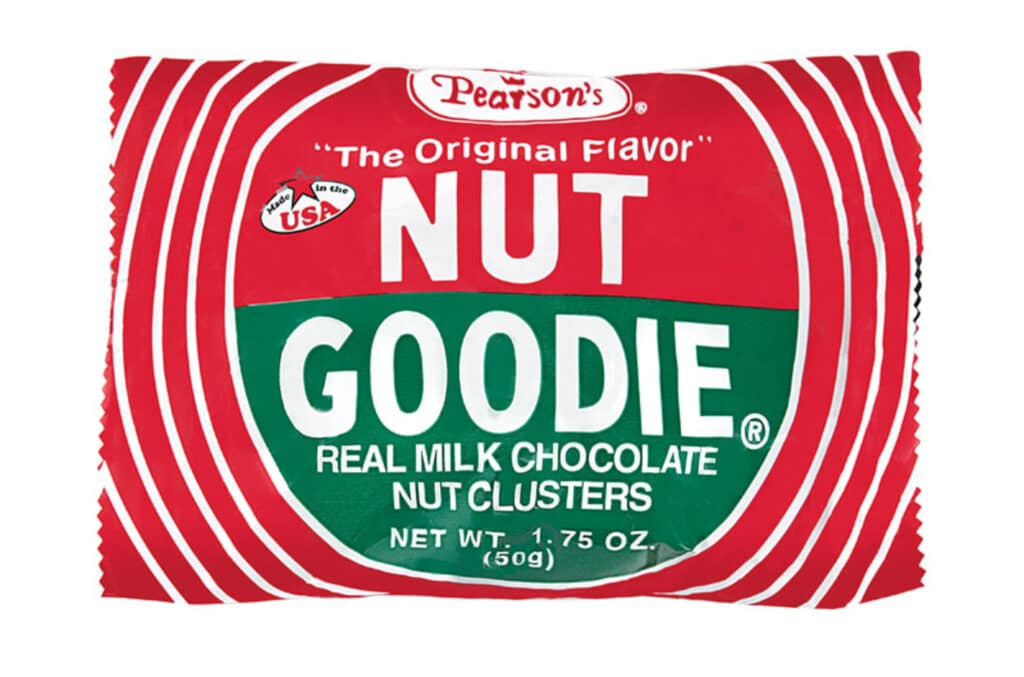
Since its establishment in 1909, the Pearson’s Candy Company has created some of Minnesota’s most adored vintage candies. Introduced in 1912, the milk chocolate-covered Nut Goodie has remained a local favorite despite a number of ownership changes for the business and a brief divergence from the original recipe.
P. Edward, John Albert, and Oscar F. Pearson opened a confectionery factory at 108 Western Avenue in Minneapolis in 1909. In 1912, the Pearson’s Candy Company started producing the Nut Goodie, which would go on to become one of their most popular goods. The Nut Goodie bar has a maple cream center around Virginia peanuts dipped in milk chocolate. It was priced at a cent.
Although a 1936 advertisement for the Nut Goodie bar revealed that the price had been reduced to three cents per piece, the firm thrived during the Great Depression. In the meanwhile, Pearson’s unveiled the Salted Nut Roll, another important product.
In 2009, Pearson’s Candy Company celebrated its 100th birthday. In 2011, Hassler sold the business to Connecticut’s Brynwood Partners. The Nut Goodie celebrated its 100th birthday the following year with a major celebration that included the launch of a brand-new flavor, the Sea Salt Caramel Nut Goodie.
The original Nut Goodie is still a regional favorite vintage candy. When visiting their home state, Minnesotans who reside elsewhere load up on treats. A handmade version of the sweet is widely available online for individuals without easy access to it. In partnership with Pearson’s Candy Company, the St. Paul-based Tin Whiskers Brewing Company produced the acclaimed Nut Goodie Porter as a limited release in 2018.
13. Jolly Ranchers
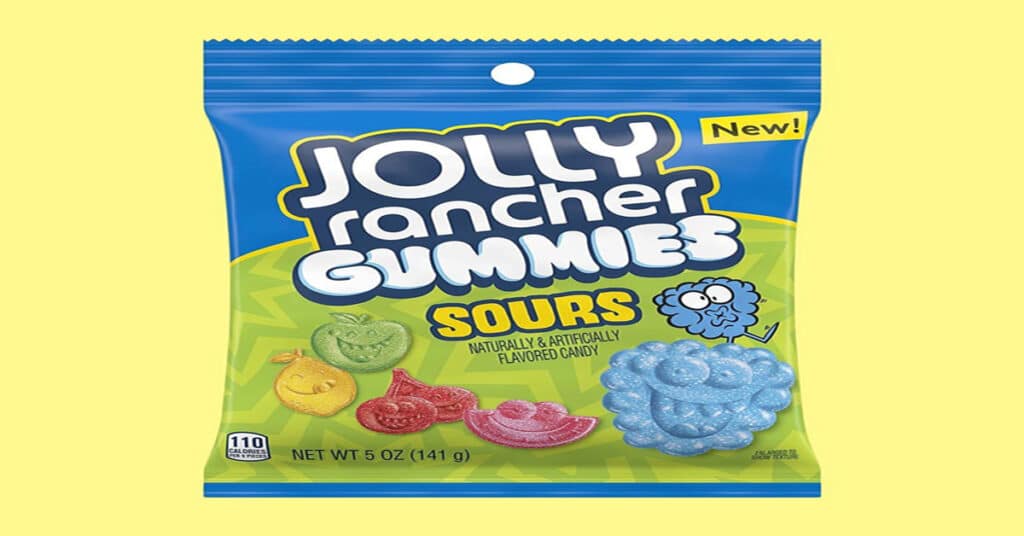
Jolly Ranchers were created and introduced in 1949 in Golden, Colorado. The business was founded in 1897 by Bill and Dorothy Harmsen. Sales of hard candies grew steadily throughout that time. The name “Jolly Rancher” was chosen to evoke a friendly, Western business. Initially, the business produced chocolate, ice cream, and hard candies.
Around the Denver area, “Ranch Made Ice Cream“ shops offered these products for sale. Another popular confection from Jolly Rancher is called “Fire Stix.” The ice cream didn’t sell well over the winter. After that, the Harmsen’s chose to concentrate on hard candies.
Production was transferred from Golden to Wheat Ridge, Colorado, in 1951. The “Famous for Flavor” brand of hard candies was created by Jolly Rancher. Jolly Rancher’s proprietors started selling their candy to Beatrice Foods in 1966 in an effort to expand their client base. The manufacture of this vintage candy continued in Colorado following the sale of the Jolly Rancher Company to Beatrice Food. Leaf Candy Company bought Beatrice Foods in 1983. When the Hershey Company acquired Jolly Rancher in 1996 and shifted manufacturing to Mexico and Canada, the production of the candy was completely moved out of Colorado.
The Hershey Company began producing a wider variety of Jolly Rancher candy. using the same fantastic flavors in beverages, gummy candies, jelly beans, candy canes, and chewy candies. Jolly Ranchers are still available at supermarkets and convenience stores, thanks to The Hershey Company.
14. Junior Mints
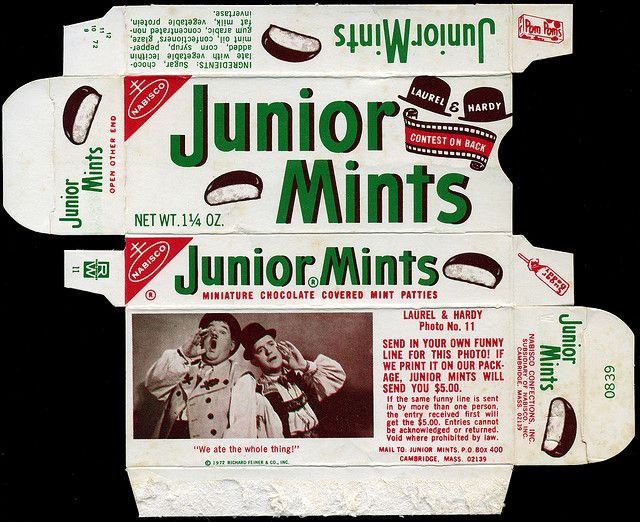
Junior Mints are little sweets with a soft mint filling within and outside covering dark chocolate. They have the ideal ratio of chocolate and refreshing mint. Every day, the Tootsie Roll Company makes more than 15 million boxes of Junior Mints.
Junior Mint is a mint chocolate vintage candy with a long and storied theatrical heritage. It’s a timeless, iconic, and vintage confection. The James O. Welch Company first introduced these soon-to-be-famous candies in 1949. Inspired by Welch’s favorite Broadway production, they swiftly rose to the top of the list of candy choices for movie theaters.
When Kramer and Jerry’s operating room shenanigans led to a mint flying out of Kramer’s hands and straight into a patient in the legendary Seinfeld Junior Mint episode from 1993, these creamy mints garnered even more notoriety. This sequence revitalized the brand’s appeal to a whole new generation and will live on in the imaginations of comedy lovers for the rest of their lives.
Even now, it remains a favorite snack in cinemas, so the appeal of this cooling sweet is still growing. This vintage candy is a surefire favorite at any event since it comes in Peppermint Crunch, a chocolate-covered mint delicacy with pieces of actual crunchy peppermint, as well as other seasonal flavors for Christmas, Easter, and Valentine’s Day.
15. Hershey’s Kisses
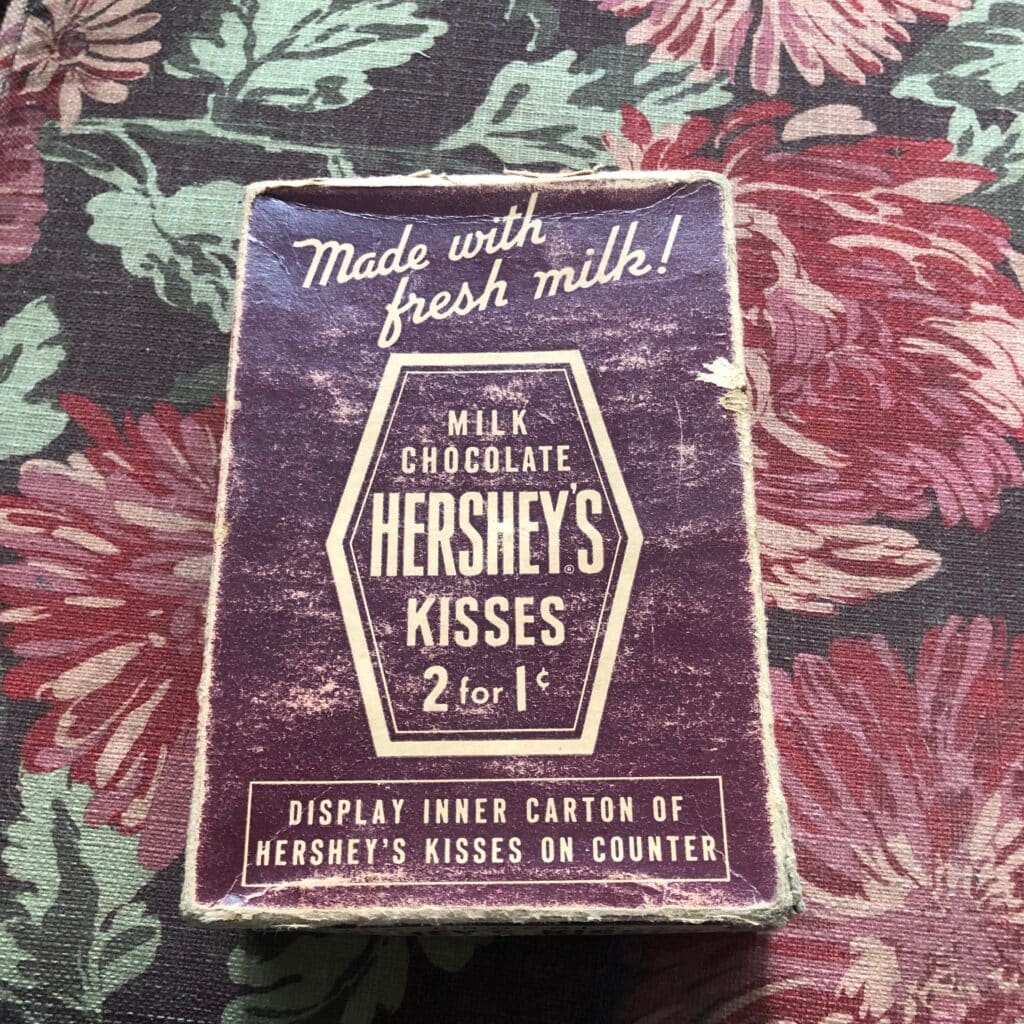
Hershey Kisses are little, delicious chocolates that have been around since 1907. Therefore, they undoubtedly loved vintage candy. In 1894, a similar treat called the Wilbur Bud was constructed of tiny chocolate droplets. The Wilbur Bud, on the other hand, was created by physically sculpting the candy rather than through mass manufacturing. To make each candy, molten chocolate was poured into a mold shaped like a teardrop and allowed to cool so the liquid could harden.
Hershey was able to quicken things. The Hershey Company developed a device that used a nozzle to automatically form a teardrop shape. Each Kiss may be placed one by one on a conveyor belt. Additionally, Hershey was able to deduce that customers might like to handle the chocolates in their hands on an individual basis. The business opted to employ a foil wrap for each small sweet in order to make this practicable.
Workers at the factory wrapped each Kiss by hand until 1921. After that, the chocolates are stamped as they go along the conveyor belt by a machine with a foil plunger. The tissue paper sticking out of the top of the Kiss was patented in 1924 and has since become recognizable.
One of the first candy manufacturers to alter its colors in accordance with the season was the Hershey Company in the 1960s. For the 1962 Christmas season, the Hershey Company originally wrapped the Kisses in red and green foil. For the first time, red and pink foils were used to celebrate Valentine’s Day in 1986. Foils are now available in a variety of designs and colors to commemorate holidays such as Easter and Halloween.
Hershey’s Kisses are available in a wide range of flavors and fillings. This vintage candy chocolate is so delicious that it’s impossible to resist even one drop.
16. Butterfingers
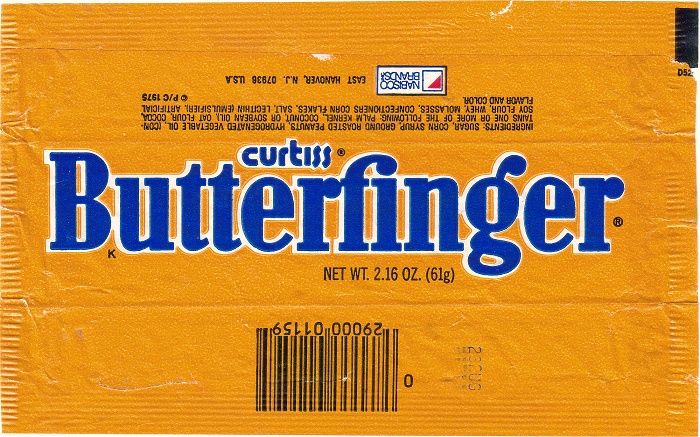
The Curtiss Candy Company invented the Butterfinger candy bar in 1923. The name was chosen through a contest. To promote this vintage candy, The Curtiss Company dropped complimentary butterfingers from planes in a number of places. It was subsequently sold to the Nabisco Company. According to legend, the original recipe was lost, so Nabisco did the best it could to recreate it. Since Nestle acquired Butterfinger in 1990, it has remained a top seller.
The most popular Butterfinger candy bar is the original thin variety. There are more of these vintage candy varieties, though. The cookie wafers in the Butterfinger Crisp bar are sandwiched between layers of peanut butter filling and are coated in chocolate. Halloween candy favorites include Butterfinger fun-size bars, which are about one-fourth the size of a regular bar. The enormous flat Gourmet Butterfinger bar and the little candy balls known as Butterfinger BBs are less common. Additionally, Butterfinger’s branding has been expanded to include ice cream and cookie batter.
The fundamental components of these vintage candy bars are an orange-colored, flaky peanut butter filling encased in chocolate. When crushed, the filling produces a rough, crumbly, crunchy feel. With layers of crispy wafers within, Butterfinger Crisp bars contain the same flavor, filling, and chocolate as regular Butterfinger bars. The core components and texture of all other candy kinds are the same.
17. Jaw Busters
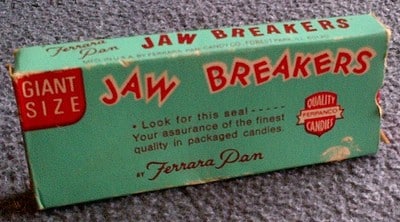
Jaw Buster is a round, orb-shaped, hard vintage candy with distinct flavor layers that extend all the way to the center. Each layer has a distinct, unique color. Jawbreaker sweets were first made by the Ferrara Candy Company, and they were initially known as “Jawbreakers.” The Jawbreakers candies are available in various sizes. The diameter and coating thickness are directly and inversely related to each other.
Even though the candy is called “JawBreaker,” it has been remarkably well-liked for more than a century. As the name implies, trying to eat it without sucking on it may really shatter your jaw. The candies are incredibly dense and require a very long time to totally melt. Jawbreakers were influenced by the sugar plum candy that was created in 1591 for elite women. It normally took many days to make and was used as an after-dinner digestive. Jawbreakers used to contain up to 100 layers and were made in around 14 days.
The candy has a tart and sour flavor. The many layers have various tastes. The exterior of this vintage candy is both mild and tough. The layers typically contain five flavors: orange (orange), lime (green), cherry (red), grape (purple), and lemon (yellow). The candy has a smooth, spherical appearance and is extremely challenging to chew or bite. Long-term ingestion leaves a lemony aftertaste in your mouth.
18. Candy Buttons
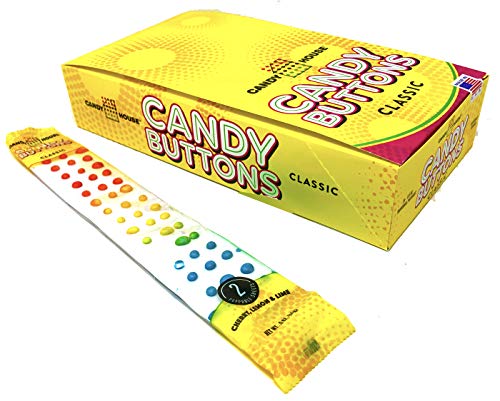
The history of candy buttons begins sometime between the 1930s and the 1950s. Although the precise date of origin is still a mystery, one thing is absolutely certain, this is amazing vintage candy. The lovely and charming snacks were initially introduced to the market by the Cumberland Valley Company. The button candy quickly grew in popularity as both children and adults yearned for its delicious taste.
The creators soon attracted the interest of another wealthy confectionery company. By 1980, Necco had acquired its competitor’s business, becoming the only American manufacturer of these tiny, delectable dots. Naturally, through time, people have grown to love these sweets, elevating them to the top of the confectionery rankings.
The ideal sweet treat for every occasion is candy buttons. It is easy to understand why these delights have been so well-liked for more than 50 years since they are colorful and delicious. This delightful vintage candy is especially suitable for Halloween, Christmas, and Easter celebrations.
19. Runts Candy
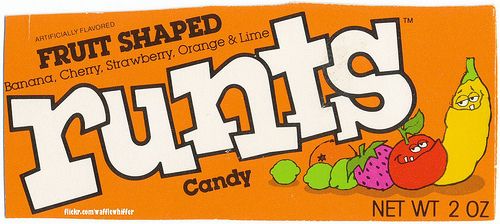
Runts candy was initially produced in 1982. It’s a fruity, crunchy, and entertaining candy to eat. The main adjustments have been to its tastes, even though it hasn’t altered much in the nearly 40 years since it was created. The Willy Wonka Candy Company first provided tastes in bananas, cherries, strawberries, lime, and orange.
The product has seen a number of flavor additions and deletions throughout the years due to changes in manufacturing businesses, including lime, pineapple, mango, and raspberry. The treat’s original center was likewise colored to match the exterior shell, but the candy’s producers later decided to switch it to a white center.
Runts are formed with a compressed dextrose core and a firm outer shell. The consistency of this core substance is similar to that of SweeTarts. The flavor is much more tart and unique than what the original candies delivered, although they are less chewy today than they were when they were first made.
Nestle produces this amazing vintage candy today. Runts have survived the demise of the Willy Wonka candy product line, even though it was one of the most enjoyable and exhilarating. Runts, which come in a variety of forms, hues, and fruity tastes, are as much fun to look at as they are to eat. Previously available in vending machines at supermarkets worldwide, this wistful vintage candy is now much more enjoyable when purchased in bulk.
Conclusion On Vintage Candy
Some things are not affected by the flow of time. If we look back in history, we can find vintage candy that created confectionery history. Many retro candy and companies have come and gone for decades. However, most of them managed to stay around and have been on the market since their appearance.
Some of the candies mentioned above may have been a huge part of our childhood. Bringing back some sweet memories always creates a feeling of comfort and coziness. In the comment section, share which vintage candy is your favorite and what memories are triggered by it.

My name is Brianna and I love writing on all topics. Candy history fascinates me and I am passionate about sharing my love of this topic with everyone else!
Please leave a review or any memories of this snack in the comments below. Thank you!
Click here for a full A-Z list of Snacks and Candy
